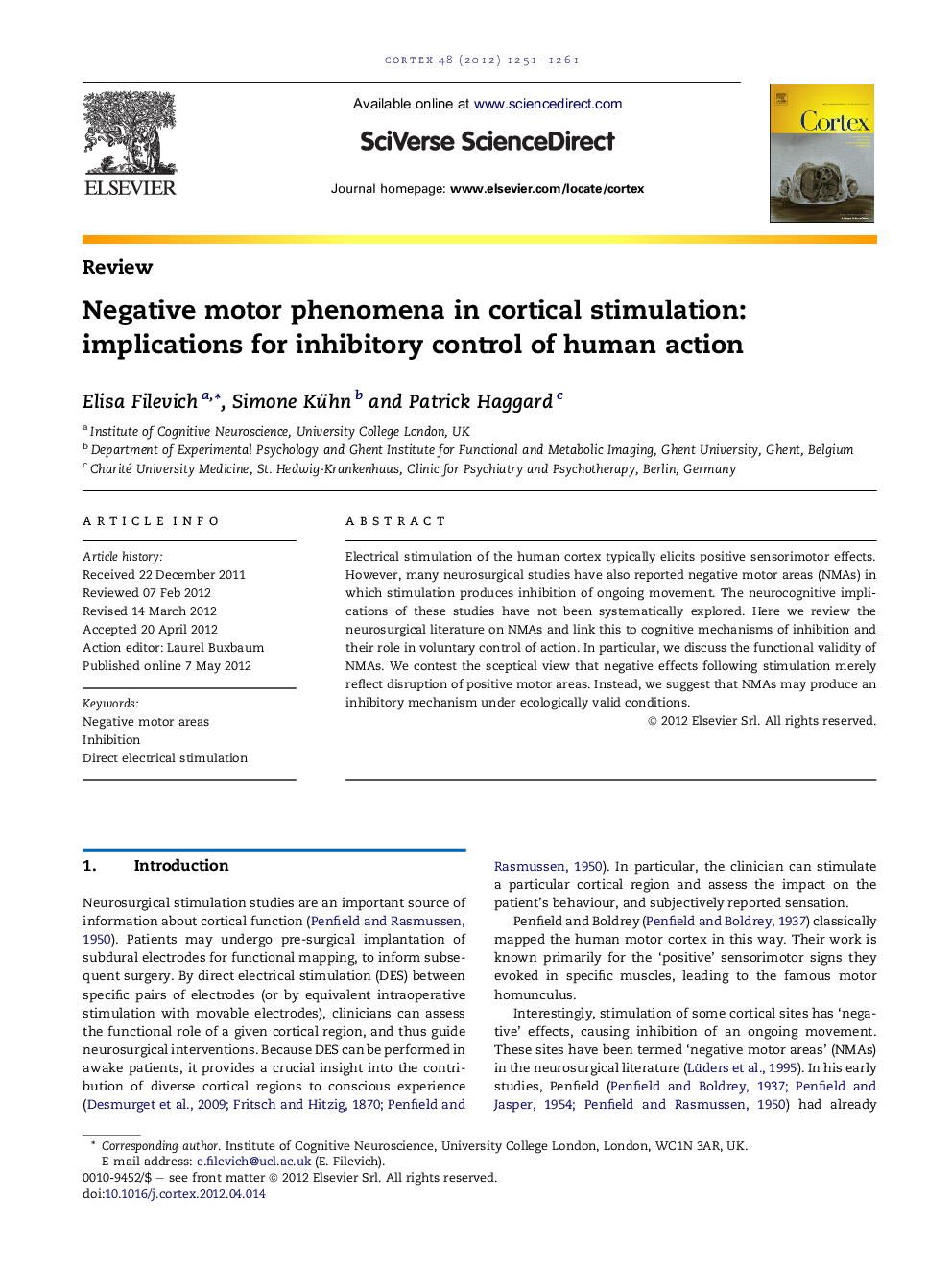| Article ID | Journal | Published Year | Pages | File Type |
|---|---|---|---|---|
| 10463238 | Cortex | 2012 | 11 Pages |
Abstract
Electrical stimulation of the human cortex typically elicits positive sensorimotor effects. However, many neurosurgical studies have also reported negative motor areas (NMAs) in which stimulation produces inhibition of ongoing movement. The neurocognitive implications of these studies have not been systematically explored. Here we review the neurosurgical literature on NMAs and link this to cognitive mechanisms of inhibition and their role in voluntary control of action. In particular, we discuss the functional validity of NMAs. We contest the sceptical view that negative effects following stimulation merely reflect disruption of positive motor areas. Instead, we suggest that NMAs may produce an inhibitory mechanism under ecologically valid conditions.
Related Topics
Life Sciences
Neuroscience
Behavioral Neuroscience
Authors
Elisa Filevich, Simone Kühn, Patrick Haggard,
